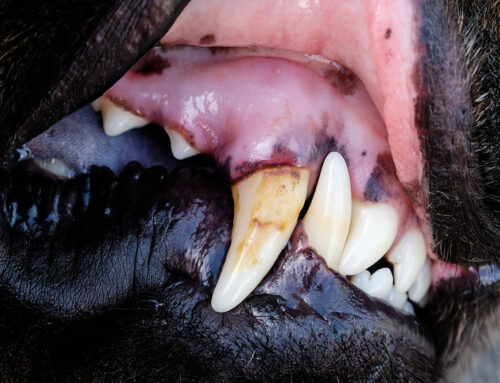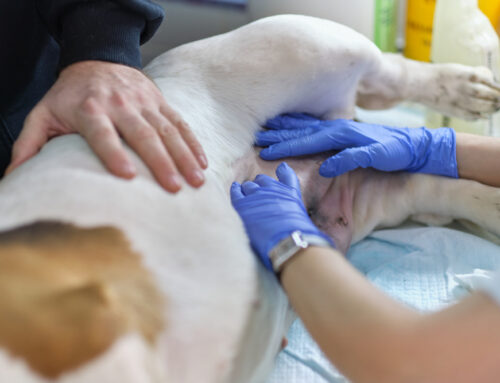When Fleas Lead to More Than Itching
A few flea bites can send some pets into a scratching frenzy. For those with flea allergy dermatitis, the reaction is much more severe. Red bumps, hair loss, constant chewing, and skin infections can appear almost overnight. This leaves pets miserable and owners desperate for relief.
At Creature Comforts Veterinary Service in Saylorsburg, PA, our AAHA-accredited clinic offers 24/7 care with advanced diagnostics and treatments to bring comfort back to itchy pets.
The Impact of Flea Allergy Dermatitis (FAD) in Pets
Flea allergy dermatitis is one of the most common and frustrating skin conditions in dogs and cats. Unlike a typical flea infestation, FAD triggers an intense allergic reaction to proteins in flea saliva. When a flea bites an allergic pet, their immune system overreacts, causing severe itching and skin damage.
The key difference between regular flea issues and FAD is the severity and persistence. A non-allergic pet may scratch occasionally. However, an allergic pet can develop widespread inflammation from just a few bites. Even minimal exposure can trigger weeks of misery. Some pets become so sensitive they react to flea saliva remaining on their skin long after the fleas are gone.
FAD Symptoms to Watch For
Early recognition of FAD prevents prolonged discomfort.
- The hallmark sign is intense, relentless scratching that’s out of proportion to the number of fleas you see. Pets with FAD may scratch until they create open wounds, leading to secondary bacterial infections.
- Hair loss often appears in a distinctive pattern. This is most commonly at the base of the tail, inner thighs, and belly. These areas may become red and inflamed, with hot spots from constant licking and chewing. While there are many causes of itching, location-specific hair loss plus intense scratching often points to FAD.
Also watch for behavioral changes such as restlessness, poor sleep, flinching when touched, or compulsive grooming that continues even after fleas are gone.
Importance of Early Diagnosis of FAD in Pets
Catching FAD early can mean the difference between straightforward treatment and months of complex care. Left unchecked, scratching and skin damage invite bacterial and yeast infections that can be harder to treat than the original allergy.
Early intervention also helps prevent chronic skin changes that predispose pets to future flare-ups. Routine wellness exams are crucial for spotting subtle skin changes and tailoring prevention strategies to your pet.
Diagnostic Procedures For FAD in Pets
Diagnosis is more than just finding a flea. At Creature Comforts, evaluation begins with a thorough skin and coat exam to identify characteristic irritation and any secondary infection. Skin scrapings may be performed to rule out mange or fungal issues.
Advanced diagnostic tools include allergy testing to uncover concurrent allergies, blood work to reveal infection or inflammation, and skin cytology to help determine if bacterial or yeast overgrowth needs targeted treatment.
Comprehensive Treatment Options For FAD in Pets
Medical Treatments
Treatment usually requires a multi-pronged approach addressing the allergic reaction and any complications. Prescription options may include:
- Antihistamines to reduce itching
- Corticosteroids to control inflammation
- Antibiotics for bacterial infections when present
Eliminating fleas from your pet and environment is critical. Consistent year-round parasite prevention kills adult fleas and interrupts the life cycle, preventing eggs and larvae from becoming biting adults. Regular, correct use breaks the re-infestation cycle that keeps allergic pets uncomfortable.
Alternative and Integrative Solutions For FAD in Pets
Many pets benefit from complementary therapies that calm inflammation and support healing. Cold laser therapy can reduce skin inflammation and promote repair. Acupuncture may help manage itching and support immune balance. Our practice’s alternative medicine services include integrative options that complement medical therapies.
Home Care and Management For Pets with FAD
Success extends beyond the clinic. Regular bathing with medicated shampoos can remove allergens and provide temporary relief. Work with your veterinarian on product selection and frequency to avoid overdrying the skin.
Environmental care can help your pet’s symptoms, too. Vacuum frequently to remove eggs and larvae from carpets and upholstery, and wash pet bedding in hot water to eliminate fleas at all life stages. Regular grooming is especially helpful with flea allergies, as professional grooming removes dead hair and debris that harbor flea dirt.
Preventative Measures For FAD in Pets

Effective Flea Control Strategies For Pets
Prevention is the most effective approach to FAD. Successful control means treating both your pet and their environment consistently. Veterinary-prescribed preventives generally offer longer-lasting, broader protection than many over-the-counter products.
Customize prevention based on lifestyle, health, and allergy severity. Outdoor adventurers and multi-pet households often need more robust protocols than indoor-only pets. Support prevention with regular grooming and cleaning routines to reduce environmental allergens and maintain skin health.
Year-Round Parasite Prevention
Flea prevention isn’t just for warm months. Fleas can survive indoors year-round, and brief winter warm-ups can trigger outdoor activity. Consistent year-round parasite prevention prevents gaps in protection that allow flea populations to rebound.
Building a Relationship with Your Veterinarian
Managing FAD successfully requires partnership with your veterinary team. Regular check-ups track treatment effectiveness, fine-tune prevention, and catch complications early. Plans evolve as your pet’s needs change.
A trusted team that knows your pet’s history is invaluable with chronic conditions. The Creature Comforts team can provide personalized guidance. Start by contacting the clinic to discuss your pet’s needs and create an individualized plan.
Emergency Care Availability
Severe reactions or secondary infections can escalate quickly. The 24/7 emergency care options at Creature Comforts ensure help is available anytime, day or night.
Common Flea Allergy Confusions
A common belief is that FAD only occurs during “flea season.” In reality, allergic pets can react to minimal exposure year-round, and indoor heating creates ideal winter conditions. Another misconception is that you’ll always see fleas on an allergic pet. Many groom so intensely they remove evidence of fleas.
Knowing the difference between normal flea bites and allergic reactions helps you decide when veterinary care is needed. Any pet might scratch at bites, but the persistent, intense itching of FAD requires medical attention.
Getting the Right Help
When discussing FAD with your veterinarian, share when symptoms began, which body areas are most affected, and any patterns you’ve noticed. Be open about your home environment and prior treatments.
Don’t wait for symptoms to worsen. Early intervention improves outcomes and helps prevent secondary infections that can take months to resolve.
Taking the Next Step for Your Pet’s Comfort
When persistent scratching, hair loss, or skin irritation appears, especially at the base of the tail or inner thighs, don’t wait it out. Red, inflamed skin, hot spots, pus, crusting, or behavior changes signaling chronic discomfort all warrant prompt veterinary care.
Creature Comforts Veterinary Service offers advanced diagnostics and comprehensive treatment, including skin testing and integrative therapies, to quickly identify causes and craft effective plans. Call us at (570) 992-0400 or go online to request an appointment to discuss your pet’s symptoms and explore available options.







Leave A Comment